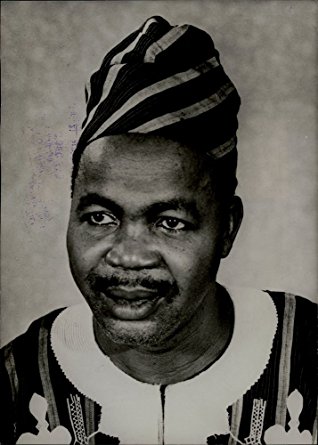Despite protests and demands for a new voters’ register, which had not been met when nominations for presidential candidates for the November 3 elections closed on September 29, 1992, five presidential candidates representing five political parties filed their nomination papers. Apart from Rawlings, who after months of uncertainty decided to run as a candidate for the National Democratic Congress (NDC), the other four presidential candidates were Adu Boahen of the New Patriotic Party (NPP); Hilla Limann, former president of Ghana, of the People’s National Convention (PNC); Kwabena Darko, a multimillionaire businessman, of the National Independence Party (NIP); and Lieutenant General (retired) Emmanuel Erskine, of the People’s Heritage Party (PHP). The PNC, the NIP, and the PHP were all Nkrumahists. A much discussed alliance among these fractious and disorganized parties did not materialize, even though just before the elections there was talk of a possible grand anti-Rawlings coalition.
The real issue of the 1992 presidential election was whether Rawlings would succeed in holding on to power as a democratically elected head of state after nearly eleven years as an unelected one. The slogan of the NDC was “continuity,” meaning the continuity of PNDC policies. In fact, to many Ghanaians, the NDC party was the same as the PNDC without the initial “P.” The opposition, by contrast, could not articulate a clear, consistent, and convincing alternative program.
The most serious challenge to Rawlings came from Boahen, who had significant support among the urban middle classes and among his ethnic kin in Ashanti Region. The inevitable split of the Nkrumahist vote weakened the chances of each of the three Nkrumahist candidates. Darko was hardly known outside Kumasi and Accra, and Limann was popularly seen as a weak and dull leader. Erskine was hardly a household word, even in Central Region where he came from. The presidential election was not fought over ideology or clearly presented political programs, but rather over personalities, over Rawlings’s human rights record, and over allegations that he had been in power for too long.
After elections in 200 constituencies (sixty new electoral constituencies had been added to the old 140) on November 3, 1992, Rawlings won a convincing majority over all his opponents combined. The margin of victory surprised not only Rawlings, but his political rivals as well. The hoped-for run-off election did not materialize because Rawlings had gained an outright majority of almost 60 percent of the nearly 4 million votes cast.
Rawlings won resoundingly in regions where his opponents, especially Boahen, had been expected to carry the day. Boahen received 30.4 percent of the total votes; Limann, 6.7 percent; Darko, 2.8 percent; Erskine, 1.7 percent; and Rawlings, 58.3 percent. Rawlings even won 62 percent of the vote in Brong-Ahafo Region, which was considered a stronghold of the Danquah-Busia political tradition. He also won in the Greater Accra Region, where NUGS, the GBA, the TUC, and the middle-class opposition had been unsparing in their anti-PNDC attacks. Boahen received a majority vote in his NPP heartland, Ashanti Region, and in the Eastern Region where he was born.
A public opinion poll conducted in late 1990 and early 1991 in Accra, Kumasi, and Sekondi-Takoradi indicated some of the reasons for Rawlings’s victory. The poll suggested that, in spite of the PNDC’s record of human rights abuses and the negative impact of the ERP, the PNDC was more popular in urban areas than had been thought. The PNDC was perceived as having done much to rehabilitate the country’s infrastructure, to instill national pride, and to improve the efficiency and honesty of government spending. Although many of the respondents felt that their standard of living had worsened since the PNDC came to power and since the implementation of the Structural Adjustment Program, a significant number also indicated that they and the country would have been worse off without the ERP. Although many considered the PNDC too authoritarian, Rawlings personally continued to be very popular and received much of the credit for the PNDC’s successes, while the PNDC as a whole was blamed for its more negative characteristics.
The shock of the NPP’s electoral defeat led immediately to disturbances in some regional capitals. A curfew was imposed in Kumasi, but in most of the country, the results were accepted without incident. The opposition parties, however, immediately protested, crying fraud as well as rigging of the ballot and asking the interim electoral commission not to declare a winner until allegations of irregularities had been investigated. On November 10, however, the commission formally declared Rawlings the winner.
Meanwhile, the opposition parties had announced their intention to boycott the parliamentary elections rescheduled from December 8 to December 29, following an appeal to the interim electoral commission. Efforts to get the opposition to reconsider its boycott proved unsuccessful, even after the National House of Chiefs announced in late November that it felt the presidential election had been fair and free. Many European ambassadors in Accra likewise announced that they had no difficulty recognizing Rawlings’s victory
International election monitoring teams from the Organization of African Unity, the Commonwealth of Nations, and the Carter Center in the United States also endorsed the results of the presidential election, although with reservations in some cases.


